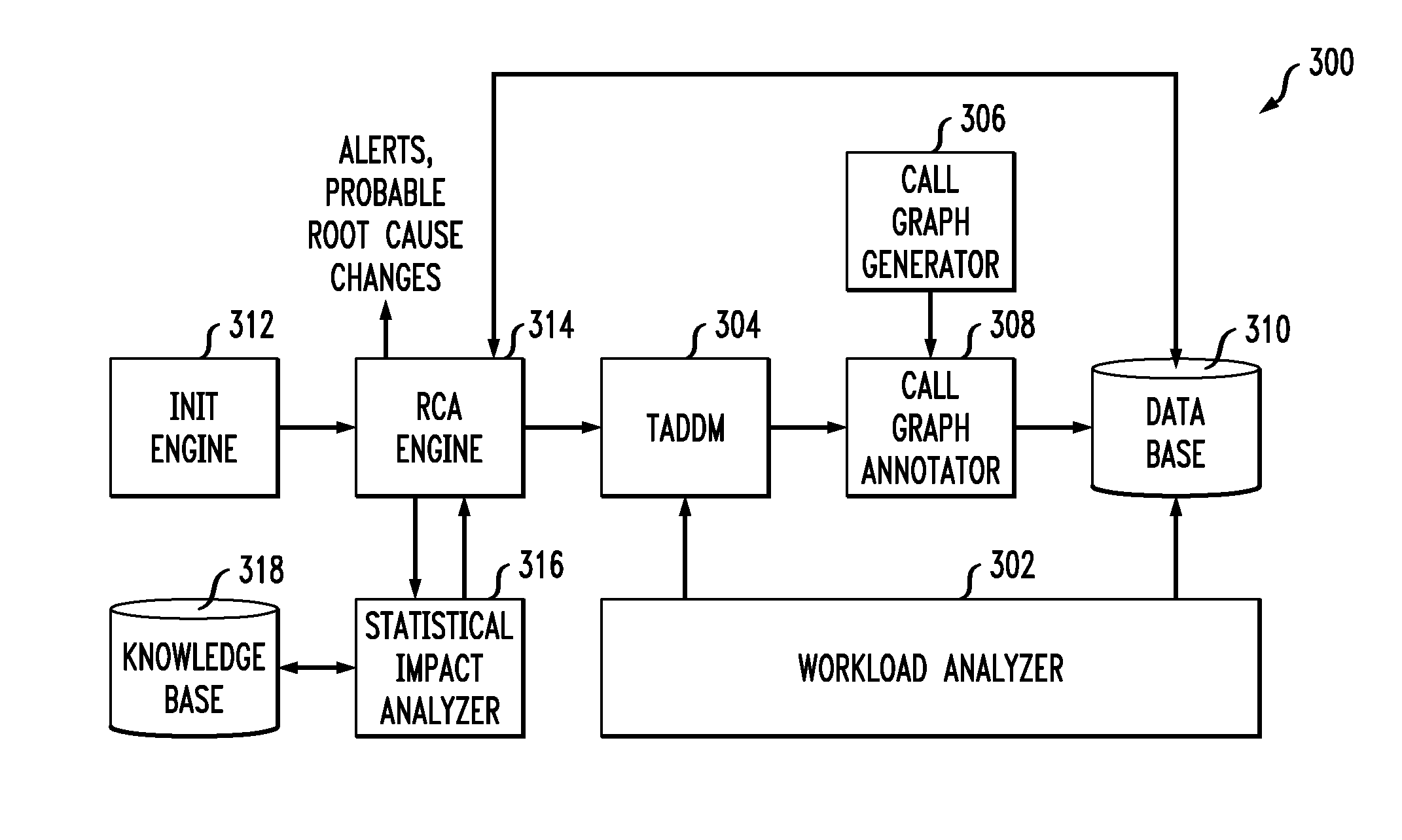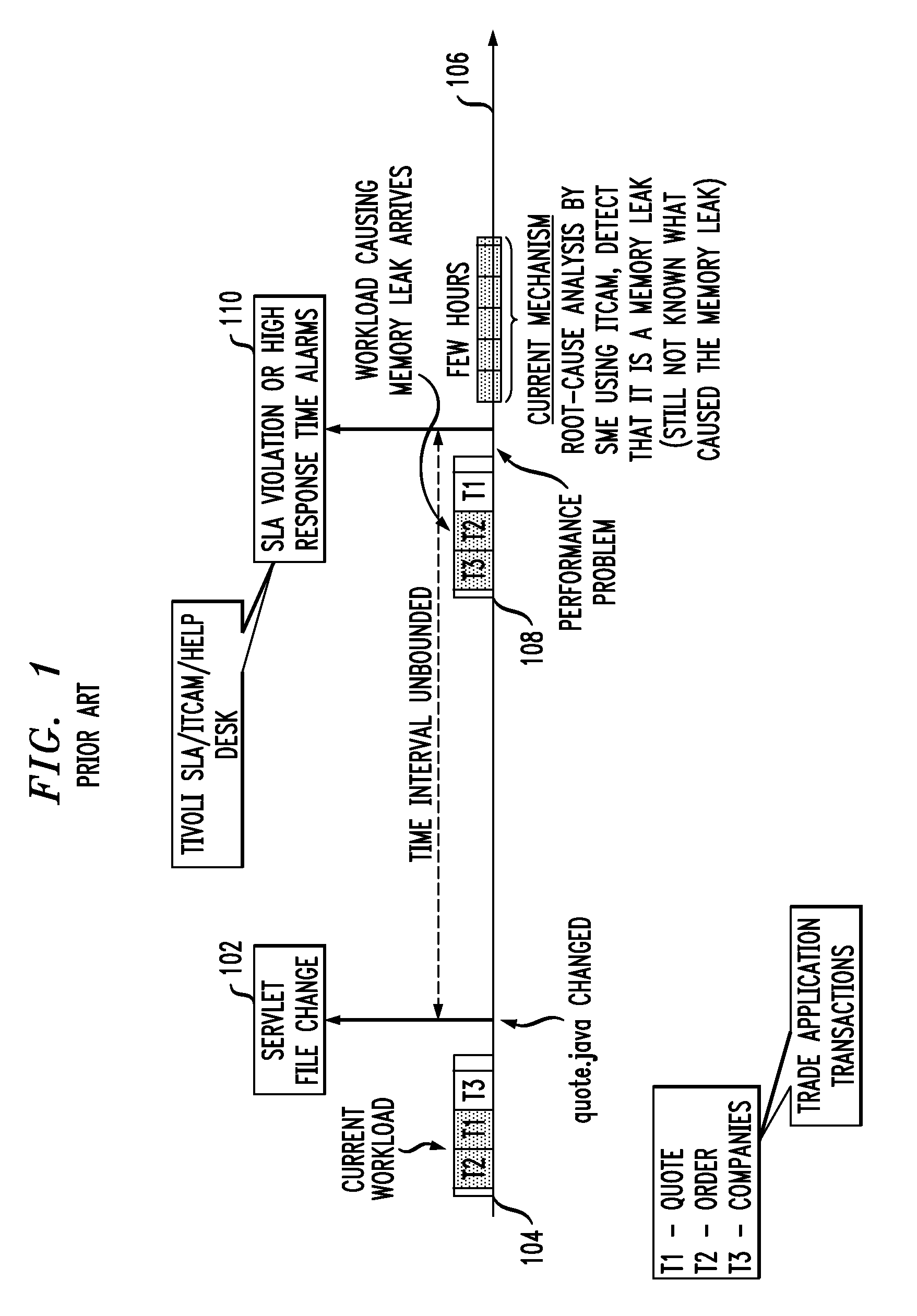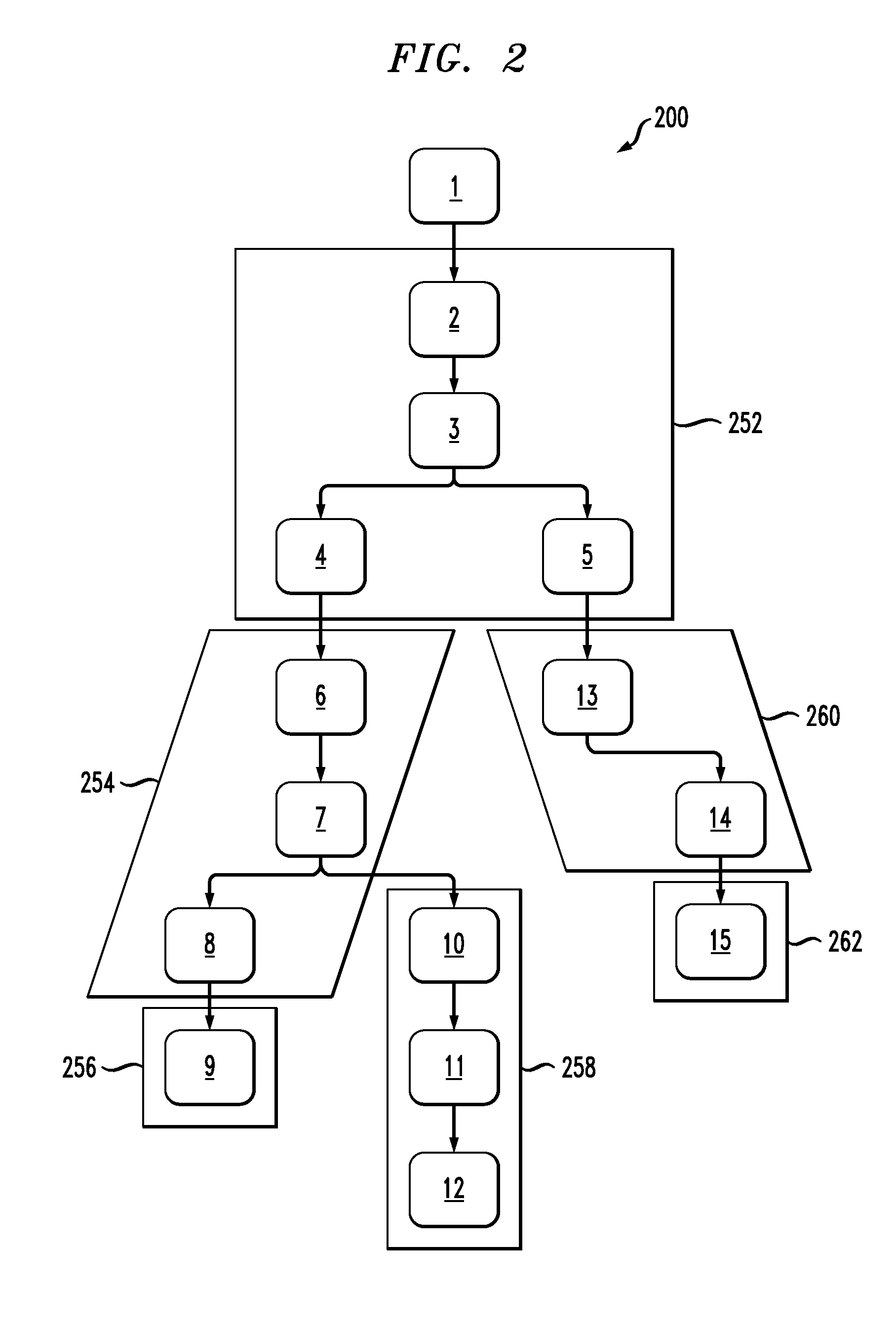Root cause analysis by correlating symptoms with asynchronous changes
a root cause and symptom technology, applied in the field of information technology problem analysis, can solve problems such as the most common problems
- Summary
- Abstract
- Description
- Claims
- Application Information
AI Technical Summary
Benefits of technology
Problems solved by technology
Method used
Image
Examples
example
[0065]Consider the transaction call graph 200 shown in FIG. 2. As noted, each numbered box 1-15 represents a component. This call graph contains three transactions T1, T2 and T3. For each of the transactions, the following are the subset of components that each one of them accesses:
T1={2,3,4,6,7,8,9}, T2={2,3,5,13,14,15}, T3={2,3,4,6,7,10,11,12}.
[0066]Assume that transaction T1 is failing whereas T2 and T3 are successful. Assume that the transaction T1 has a change set T1c applicable on it such that:
T1c{C1, C2, C3, C4, C5,}. (11)
Similarly, T2c={C1} and T3c={C2,C3}. There may be some other changes present which are applicable only to T2 or T3 but there is no need to be interested in those changes as those are definitely not the root cause changes for transaction T1.
Now, based on this set T1c can be divided in three sub-sets, namely:
{C1}, {C2,C3} and {C4,C5}, the union of which makes the set T1c. As per the theorem in the immediately preceding section, do not consider any further su...
PUM
 Login to View More
Login to View More Abstract
Description
Claims
Application Information
 Login to View More
Login to View More - R&D
- Intellectual Property
- Life Sciences
- Materials
- Tech Scout
- Unparalleled Data Quality
- Higher Quality Content
- 60% Fewer Hallucinations
Browse by: Latest US Patents, China's latest patents, Technical Efficacy Thesaurus, Application Domain, Technology Topic, Popular Technical Reports.
© 2025 PatSnap. All rights reserved.Legal|Privacy policy|Modern Slavery Act Transparency Statement|Sitemap|About US| Contact US: help@patsnap.com



